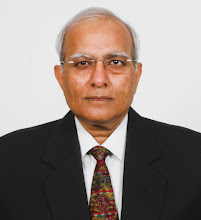From Recognition to Nation-Building: Tapping the True Potential of India’s Top 2% Global Scientists
India today boasts over 5,352 researchers ranked among the top 2% scientists globally, as recognized by the prestigious Stanford–Elsevier citation rankings. These minds span disciplines ranging from materials science, artificial intelligence, renewable energy, to biomedical engineering. It is a number that should evoke pride, but also provoke policy.
Despite this remarkable intellectual reservoir, India continues to import critical technologies, license foreign software and equipment, and outsource strategic innovations. The irony is unmissable: while our scientists lead the world in research citations, we often fail to translate this excellence into economic gains, strategic resilience, or technological sovereignty.
So, what’s holding us back?
The Bottleneck
Isn’t Brilliance. It’s Utilization.
- Lack of Mission-Driven
Funding: Many of these researchers work in silos,
with underfunded labs and limited industry engagement.
- Minimal Role in Policy or
Procurement: Top scientists are rarely involved in
drafting national innovation strategies or evaluating high-value imports.
- Poor Lab-to-Market Linkage: Patent filings remain untapped, and university tech transfer
offices are often understaffed or non-existent.
India must rethink its approach to science and innovation, not someday, but today: Need a Paradigm Shift.
India must move from mere recognition to the mobilization of its scientific elite. Some suggestions:
1. Establish National Scientific Corps
Create a task force of top-ranked scientists
to advise ministries, PSUs, and defence units on research priorities,
indigenous alternatives, and innovation roadmaps.
2. Redirect R&D Towards Import Substitution
Channel research funds into areas where India is most vulnerable, such as semiconductors, battery technology, medical devices, and defence-grade alloys.
3. Mandatory Industry–Academia Collaboration
Tie large-scale public projects to
compulsory collaboration with these top scientists, ensuring their
breakthroughs don’t sit dormant in journals.
4. Honor with Responsibility
Make inclusion in the top 2% a passport to influence, whether on S&T councils, national procurement boards, or startup incubator panels.
A Gentle
Reflection on Responsibility
It is equally important to
reflect on how actively these top 2% globally ranked Indian scientists have
engaged with the government and societal institutions to channel their wisdom
and talent toward meaningful development. While their intellectual contributions
are undeniably significant, the transformative power of research lies not just
in citation counts but in its ability to inform national strategies, uplift
communities, and guide ethical innovation.
Their presence at the forefront
of global science offers a rare opportunity—and responsibility—to shape India’s
journey toward technological and societal resilience. In that spirit, it is
hoped that more scientists will embrace not just visibility, but visible
impact.
The Way Forward
Recognition
must not become a ceremonial exercise. These scientists are more than data
points in global rankings; they are architects of possibility, guardians
of national pride, and solutionists in a country still grappling
with dependency on foreign technology.
India cannot afford to leave this talent dormant. Their intellect has earned global acclaim; now it must deliver national upliftment.
If transformation is our goal, we must ask: How many of India’s top 5,352 global scientists are shaping decisions that define our future?








0 comments:
Post a Comment